Backyard Mothing Part 1 - How to Catch a Moth ...A Basic Introduction to Traps and Mothing
Many of us enjoy photographing moths and other insects. However, what if you want to take it to the next level? Perhaps identifying and studying the moth fauna in your area and maybe even keeping records of what you find. Depending on where you live there may even be recording schemes that allow you submit your records. For this you will need to know how to catch a moth as opposed to wandering around hoping to see one.
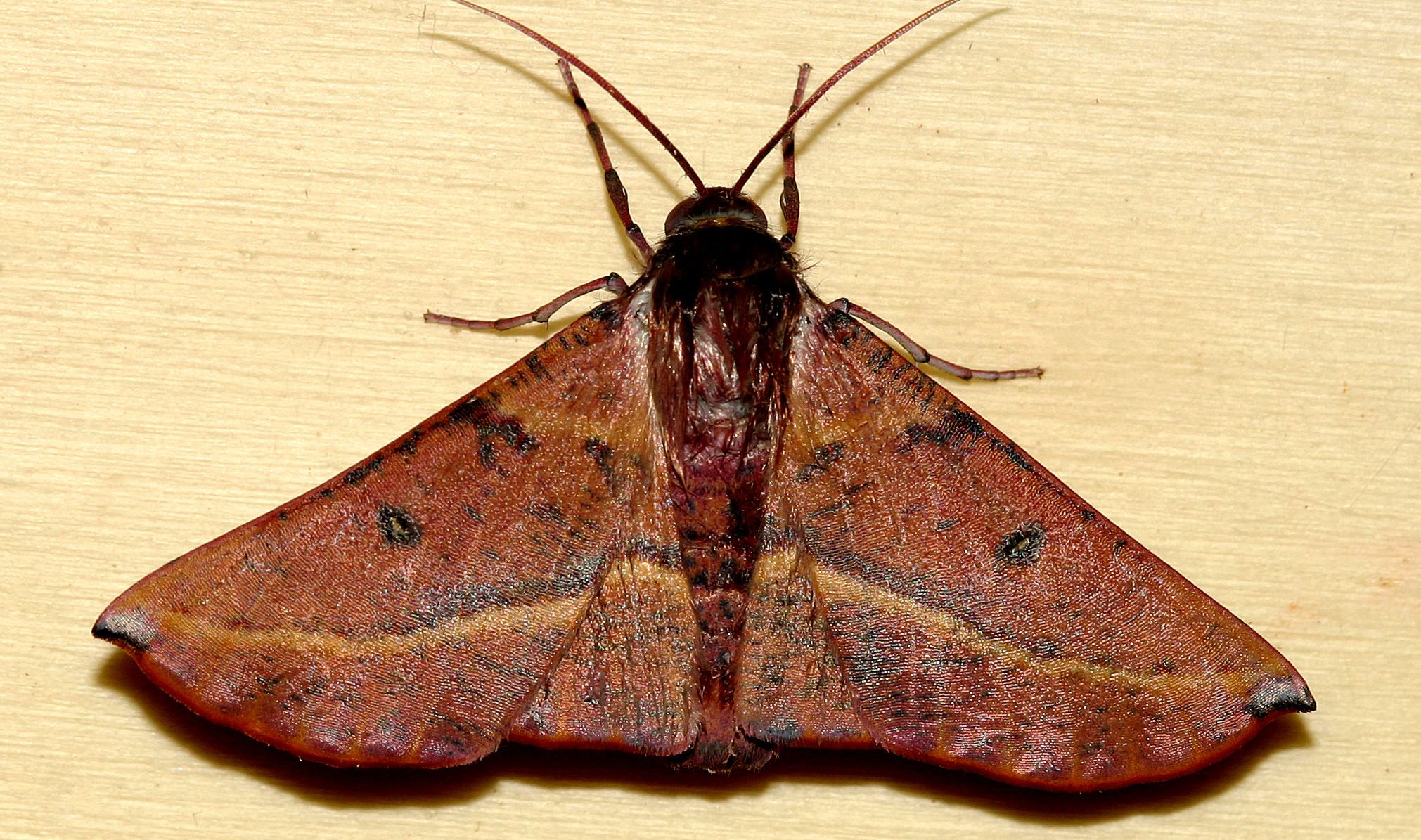
The Hakea moth Oenochroma vinaria-
It’s no secret that moths are drawn to light. As the saying goes one is drawn “like a moth to the flame”. Anyone who has spent time around a camp fire may have literally seen moths plunge headlong into the flames. Shakespeare wrote in 1600, “Thus hath the candle singd the moath”. He refers to this as already being an ancient saying in his day.
Of course we now know that the moths are not actually drawn by the light but they are confused by it. The moth navigates by means of that timeless luminary, the moon. As kids we would walk around and believe that the moon was following us. The same sensation occurs if you drive along a straight road. The trees and bushes by the side of the road seem to rush past us. The houses further back seem to move more slowly and the distant mountains move very slowly. The moon being at an extreme distance seems to be in a constant position in relation to ourselves and so it may appear to be following us. It is this relatively constant position which enables moths to navigate. Simply keep the moon at a constant angle to yourself and you will be traveling in a fairly straight line for the next hour or so. Flames, or these days artificial light sources, are much closer than the moon. If you try to travel with the artificial light at a set angle to yourself you will soon find yourself going in circles and spiraling in toward the light.
Kitchen Window / Back Porch Mothing
It is this navigational confusion which makes it easy to find moths for photography or study. The most simple method is to look for moths on the kitchen window or you might leave the light on at the back porch. In warmer areas this in itself may provide you with enough moths to satisfy your interest.
The Sheet Method
A step up from this is to hang a white sheet up on the clothes line or by a rope and shine a bright light onto the sheet. This will gives the moths a nice surface to settle on as well as making them easy to spot.
Moth Traps
One problem with the above methods is that you need to be in attendance the whole time or else you’ll end up missing those moths that come and go. There are many designs of “moth traps” which will keep the moths happy and in good condition until you are ready to view them.
You can either make your own moth trap or you can purchase one. There are numerous plans on the Internet showing you how to build your own. Some commercial suppliers will sell you kits containing just the electronic components allowing you to design the trap itself. Unless you enjoy the DIY side of things then you may simply want to purchase one ready made.
So which design is the best? There will be many and varied opinions on this. Having said that the Robinson Trap is generally considered to be the most effective design. They will generally use a 125w mercury vapour (MV) bulb. These are extremely bright to us and even brighter to the moths as much of the light is in the ultraviolet spectrum and invisible to us. The moths fall down a funnel into the traps body. While very effective, they are also very expensive.
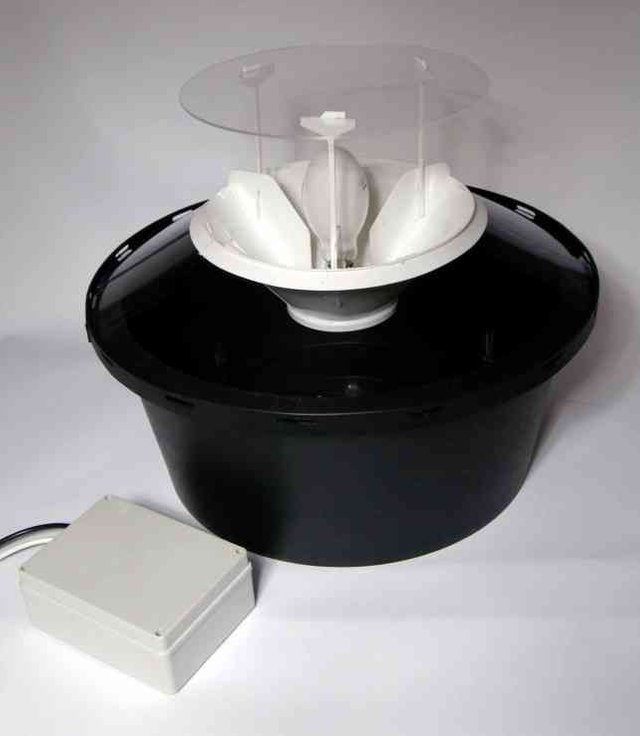
Robinson Trap (Image courtesy of Anglian Lepidopterist Supplies)
The Skinner Trap is probably the most common design used by amateurs. They usually use the same lighting, that is a 125w MV bulb, but the trap is basically a box with two sheets of perspex sloping down into the top, with a gap where the moths can enter. It’s very easy to lift the lid and check out your catch while the trap is still running.
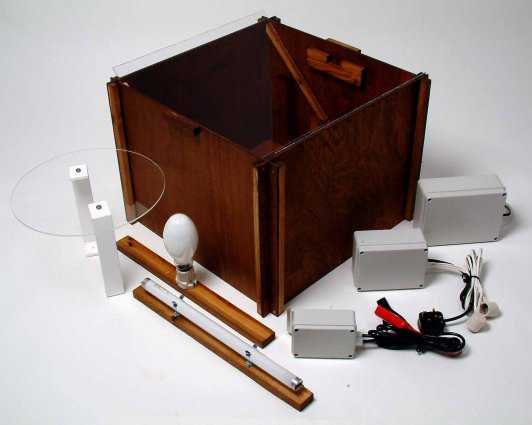
Skinner Trap (Image courtesy of Anglian Lepidopterist Supplies)
The Heath Trap uses an vertically positioned fluorescent tube surrounded by vanes. The moths hit the vanes and fall through a funnel into the trap. These are the least effective. However, they can be set up to run from a battery thus allowing you to take the trap well away from mains power. While catching fewer moths, many people have commented that some species come to the actinic light which rarely appear at the MV light.
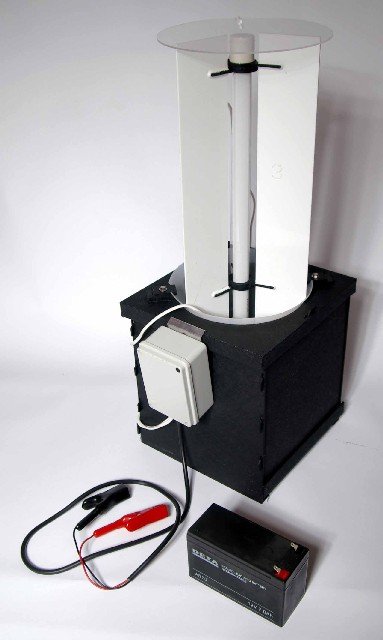
Heath Trap (Image courtesy of Anglian Lepidopterist Supplies)
There are many variations of each the above traps. For example, for my own skinner trap I have a 125w MV bulb, however I also have 40w actinic flouro tube which I can use instead.
When to Put Your Trap Out
The obvious answer is at night. However, you will find that different species are on the wing at different times. For example some are crepuscular fliers meaning they only fly during the twilight period. Others will fly well after dark. Then there are the ones which only fly in the wee hours of the morning or even around dawn. The conclusion is obvious. For best results you want the trap to be running all night. Of course that is not always practical. I had an external power point fitted to the shed so I can leave the trap on without having to leave the window open all night. There is another catch though. What if it rains? You can fit a protective cover over your bulb. This is something I need to do myself. At the moment I have to check the forecast as even light rain can potentially explode the hot MV bulb. Having said that, I have been caught out a few times and the bulb survived. If you have neighbours close by you will also need to consider whether the bright light is maybe shining through their windows and depriving them of sleep.
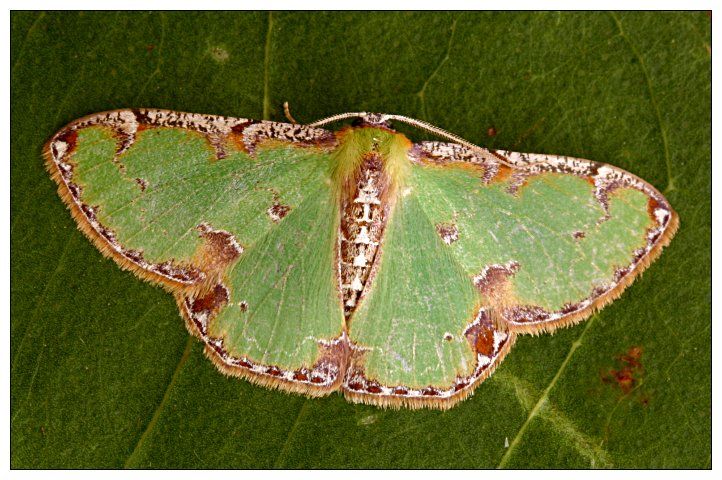
Eucylodes buprestaria – I only ever get this moth by leaving the trap on overnight.
The warmer it is the more active the moths are. Also humid conditions seem to bring out more moths with many of them only emerging after periods of rain.. Another thing to look for is an overcast sky. On a clear night with the moon shining the moths are less likely to be tricked into approaching your trap. Windy conditions also seem to reduce the amount of moths. So, a calm cloudy, hot and humid night might give great results. Keep in mind though that some species may only be on the wing in winter so a variety of conditions will ultimately give you a wider variety of moths.
Keeping the Moths in the Trap
Moths can and will escape from a Skinner trap. You need to encourage them to stay. The simplest way to do this is to place egg cartons inside the trap. This will give the moths a variety of nooks and crannies in which to settle. Sometimes the trap may look empty until you start turning over the egg cartons.
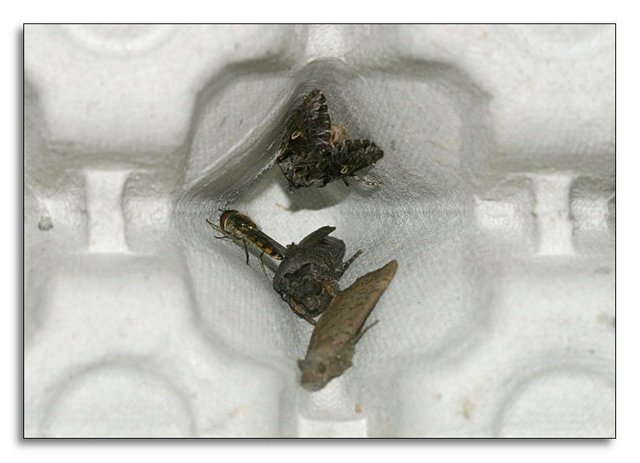
Catch of the day hiding among the egg cartons
Predators too will quickly learn that your trap is full of potential prey. At my place, Kookaburras have been known to arrive at dusk and wait for the trap to go on. Sparrows and Fairywrens will actually get inside the trap and start helping themselves. Other birds will be waiting for you to release your moths each day. All you can do about this is to try and vary the position of the trap and the time of day you release the moths.
Another handy thing to have is a butterfly net. If you are outside watching the action around your moth trap you’ll notice not only the odd escapee but also some large moths that will fly in and then actually head away again. With the net it’s easy to sweep them up and place them into the trap for later inspection.
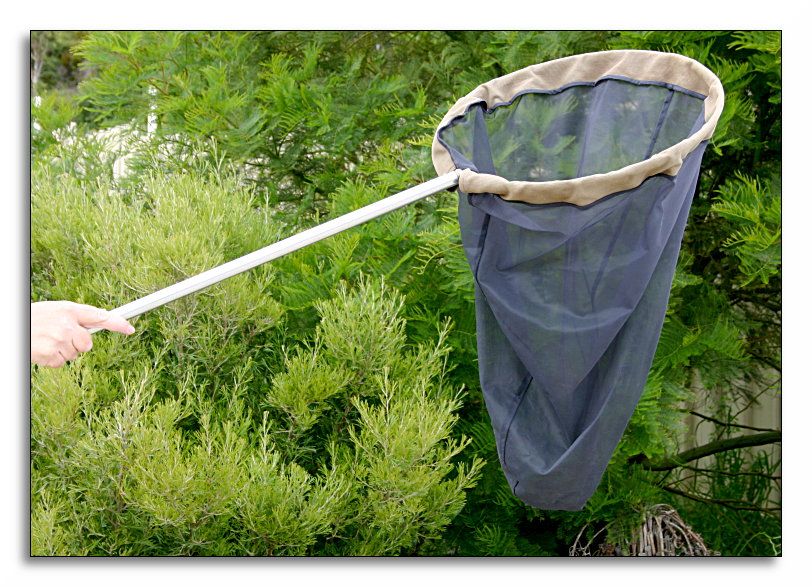
A butterfly net
Other Ways of Finding Moths
Sugaring and Wine Roping
Sugaring is another method used to attract moths. Usually it consists of a sticky mixture of ingredients such as treacle, brown sugar, rotting fruit, ale, wine, brandy etc etc. Everyone seems to have their own secret ingredient. This is painted onto a tree trunk or post. An alternative to this is Wine Roping where ropes are soaked in red wine and sugar. Short lengths are then hung in branches of trees. I have had only limited success with these methods when I was in Britain although I know they have worked well for others. I have read that these methods are not very successful on Australian moths but it is certainly something worth trying.
Searching
Not all moths will come to lights or sugar. Sometimes you really will have to will have to go in search of them. Try checking out flowering native plants at night with a torch. Also day flying moths such as Eutrichopidia latinus are not likely to appear in a light trap. Then there are the Glyphipterigids (or just glyphips). These small moths are also active by day and are found on flowers.
Rearing
Sometime the only way you will see a particular moth is to rear it yourself from eggs or larvae. For example what hope have you got of a female Painted Apple moth flying to your trap. (These are completely wingless) The rearing of moths is whole other subject in itself which I really should do a blog post on. For now I shall merely mention it as another avenue of finding moths.
Assembling
This technique involves placing a virgin female moth in a net bag or cage upwind of the habitat where the males can be found. This can bring in males from some distance away depending on the species. In Britain it works particularly well with the Emperor Moth and I’ve been meaning to try it out with a Helena Gum Moth.
Well I hope this post has at least given an overview of the methods of mothing and maybe it will inspire someone to get away from the computer and the telly and have a go but I warn you – once you get started the hobby will draw you in like a moth to the flame.
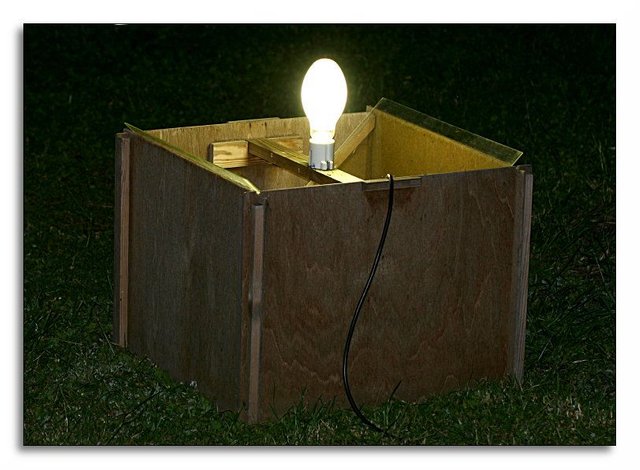
My moth trap in action
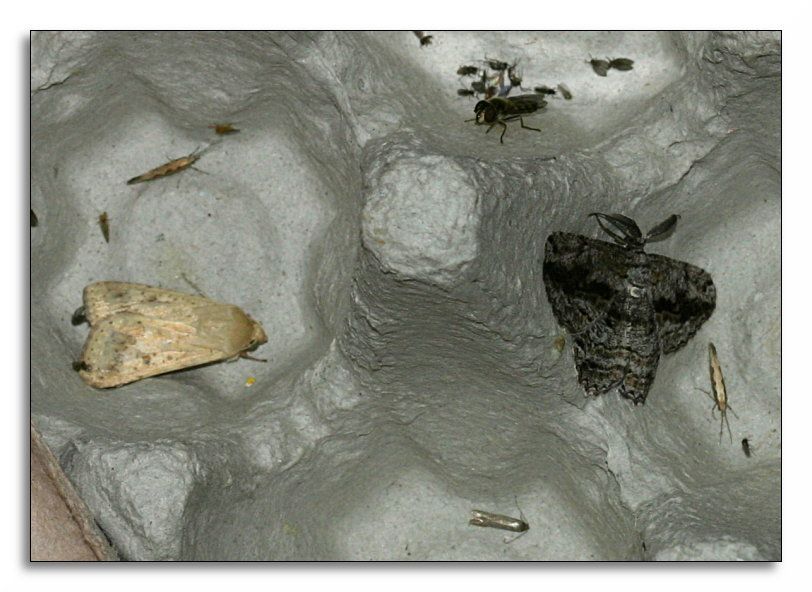
...and some more of moths hiding in the egg cartons



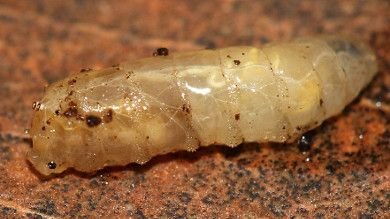

This post recieved an upvote from minnowpond. If you would like to recieve upvotes from minnowpond on all your posts, simply FOLLOW @minnowpond
@mostly.nature Terrific write-up. Certainly This is often truth in each individual state..
Very cool post! I didn't know about the moth navigational system. Very interesting, and it explains why moths fly circles around light.
Thanks. Glad you found it interesting.
woohoo wonderful articel, great job :D
Thanks very much.
How I catch a moth:
Take a glass and a newspaper.
Trap the unwanted moth inside... yuk..
Ditch the moth outside and close all the windows!
...and don't forget to dispose of the contaminated glass :-)
Yeaaa change to curtains she was on, clothes I caught her in...
Oh the hell, I just might have to move out and find a new moth-sterile place :D
This post has caught the eye of @MuxxyBot and has been nominated by the curation team.
If chosen it will feature in a curation post by @MuxxyBot.
An image from your post may be featured.
Please reply to this comment if you accept or decline.
Sure thing. I need all the promotion I can get ☺
Congratulations. This post is featured in today's Muxxybot curation post.https://steemit.com/curation/@muxxybot/muxxybot-curation-22